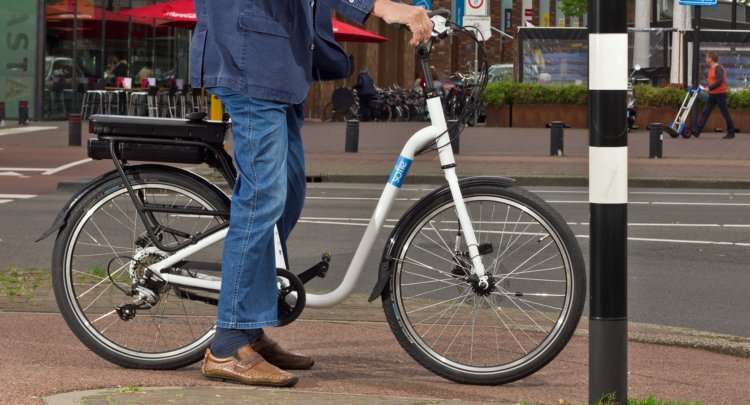Credit: University of Twente
A Dutch consortium including the University of Twente developed an electrical bicycle that prevents elderly people from falling. The smart assistive bicycle, called SOFIE, increases stability by via drive-off assistance and by automatically lowering the saddle at low speeds. The UT, Indes and Roessingh Research and Development (RRD) worked together on this science-based bike development. The scientific work of Vera Bulsink, Ph.D. student at the UT, co-developed the design and increased the stability of the prototype. She improved computer simulations and did laboratory testing on bicycling stability. She defended her Ph.D. project on 7 December 2017.
Single-sided falls from bikes are a common reason for traffic accidents. People fall from their bikes because they lose balance, and with increasing age, there is a higher accident risk. They are more afraid of falling, have a slower reaction time and need to work harder to compensate missing stability at low speeds. Due to a growing number of older people in society, accidents are more likely to occur. The project SOFIE developed a prototype of an electric bike that supports the stability of elderly or people with disabilities, especially when riding slowly. Challenges in developing those bikes are attractive design, comfort, and dimensional similarity to current bikes.
Stable bike frame
Bulsink compared possible cycling control strategies of older cyclists to younger cyclists in laboratory tests. Existing research models of bike development calculated the rider as one mass. But the personal properties of the cyclist determine the probability to fall from a bike. Vera Bulsink extended existing bicycle computer models with a realistic tire-road contact model and added the motions of the cyclist, like steering movement, upper-body movement and outward knee movements.
The computer simulation model resulted in several design suggestions for a more stable bike frame. The combination of the steeper head angle at the steering axis, the smaller wheels and a shorter wheelbase makes the bicycle more stable at low speeds. The computer model makes it easier to judge the stability of bicycle designs.
The low entry of the SOFIE bicycle improves the ease of mounting and dismounting the bike, and an automatic saddle adjusts its height to the speed while riding. Also, drive-off assistance helps to get speed and avoids slow cycling, and the limitation of maximum speed to 18 km/hour prevents falling.
The bike is not in production yet. The consortium contacted several manufacturers with their design. They are interested, but so far none of has decided to produce it. "A pity," according to Bulsink. "I am convinced that this design can prevent a lot of elderly people from falling."
Provided by University of Twente
























